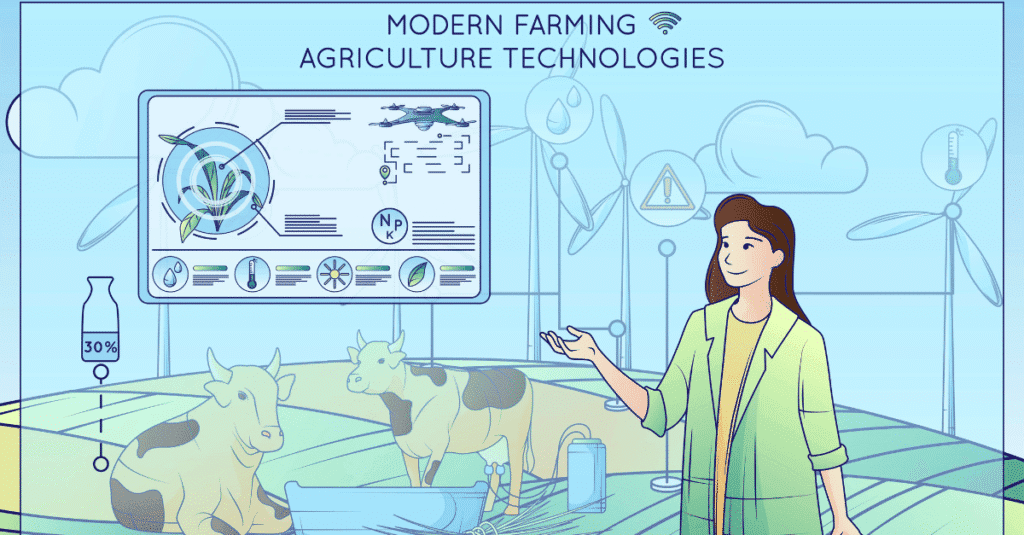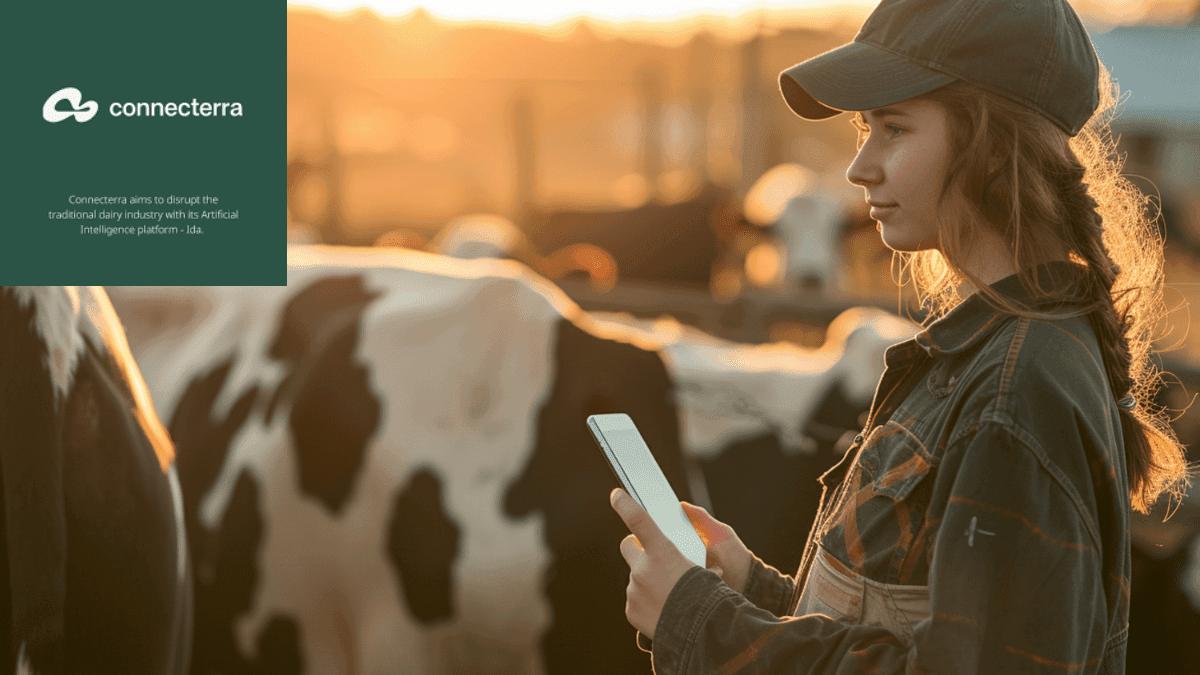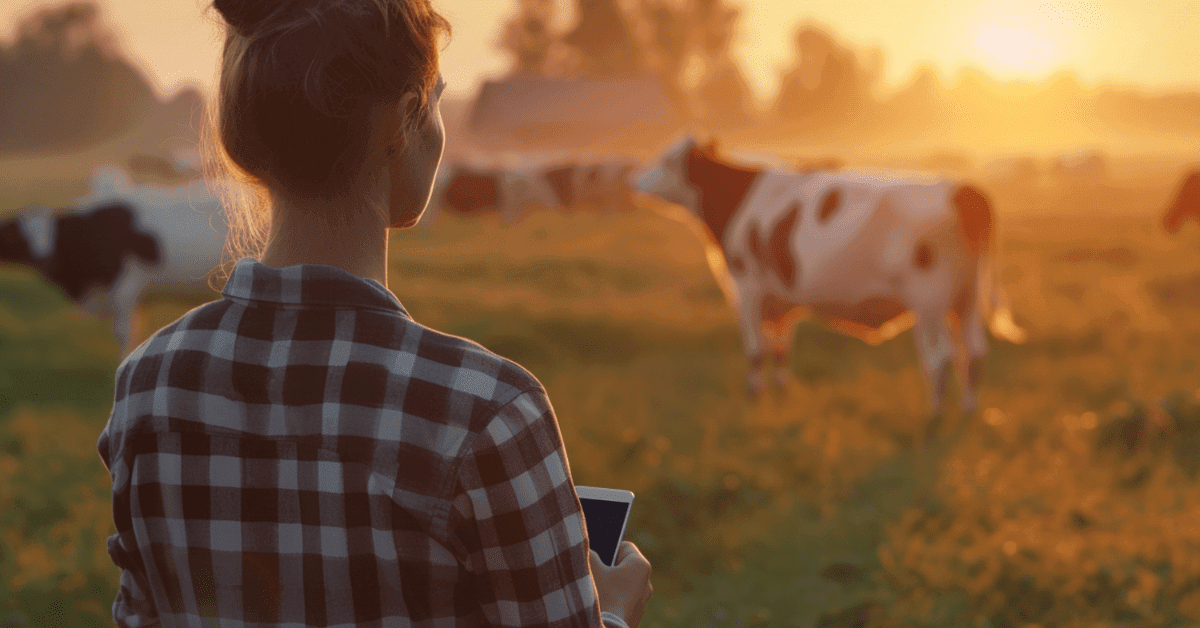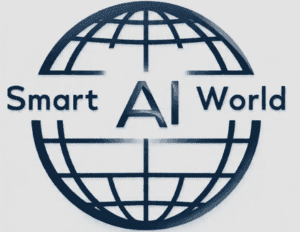🔹 Introduction: Why AI Training for Cattle is Changing Farming Forever
Quick Navigation
Toggle
A revolutionary update to cattle farming is currently taking place. AI training for cattle is more than just a catchphrase in 2025. Farmers’ interactions with their herds are changing as a result of this innovative method.
Cattle management has always mainly depended on human observation and experience. Farmers would manually monitor breeding cycles, keep an eye out for symptoms of disease, and make educated guesses about feeding regimens. Although it wasn’t always effective, it did work.
We are now entering a smarter era because to AI. Envision your farm collaborating with you around-the-clock, utilizing real-time data to track cow activity, identify disease before symptoms appear, and suggest targeted feeding to increase milk production.
The fundamentals of AI training for cattle, its resources, practical applications, and how to implement this revolution on your own farm—whether it’s a small dairy or a major commercial enterprise—will all be covered in this essay.
🔹 What is AI Training for Cattle? (Easy Explanation for Farmers)
Let’s take a straightforward approach.
AI training for cattle refers to the use of artificial intelligence, or intelligent computer systems, to track, direct, and enhance the rearing, feeding, and breeding of cattle.
It gathers information from your animals, including their activity, temperature, eating patterns, and even vocalizations, using sensors, cameras, and smart collars. AI software then examines this data, “learning” patterns and offering insights.
📌 For example:
- The artificial intelligence warns you of a potential disease if a cow’s temperature increases unusually.
- A cow will alert you when it’s ready to reproduce.
- It suggests ways to fix an eating habit that isn’t right.
It’s similar to having a knowledgeable cattle manager constantly keeping an eye on your herd and never taking a break.
🔹 Top Benefits of AI Training for Cattle in Real Farms
Here’s why more farmers are switching to AI in 2025:

✅ 1. Saves Time and Labor
- No need to keep an eye on every animal by hand.
- Automatic recommendations and alerts are sent.
- cuts down on time spent on monotonous work.
✅ 2. Enhances Animal Health
- early sickness detection.
- continuously checks behavior and vital indicators.
- lowers veterinary expenses through preventative treatment.
✅ 3. Increases Milk Production
- AI maximizes feeding quality and timing.
- monitors each cow’s milk production.
- identifies stress levels that have an impact on output.
✅ 4. Improves Breeding Success
- correctly monitors heat cycles.
- forecasts the best moments for insemination.
- reduces the number of unsuccessful breeding attempts.
✅ 5. Tracks Behavior and Movement
- detects unusual activity or lameness.
- Notifies if a cow is isolated, which is an indication of disease or harm.
- keeps an eye on herd movement patterns for security.
By investing in AI Training for Cattle, farmers are making their work easier while boosting profitability.
🔹 Best AI Tools Used in Cattle Farming (With Examples)

Let’s look at some real tools being used in smart cattle farms:
📌 Connecterra (Ida)
- tracks the movements of cows using wearable sensors.
- An AI system provides each cow with unique insights.
- aids farmers in making data-driven choices.
📌 Moocall
- To keep an eye on calving, it is attached to a cow’s tail.
- Notifies users via SMS when a birth is imminent.
- minimizes human mistake and calf loss.
📌 Cainthus
- uses cameras and facial recognition in barns.
- observes the eating, drinking, lying, and behavior of cows.
- shows the evolution of health trends.
📌 SenseHub by SCR
- monitors temperature, movement, and rumination.
- aids in early disease detection and reproductive optimization.
Every tool has advantages. For instance:
- For small farms, Moocall is perfect for calving.
- For data-driven herd management, Connecterra is ideal.
- Larger farms with sophisticated barns are a good fit for Cainthus.
🔹 Real-Life Examples: How Farmers Are Using AI for Better Results

📍 Netherlands Dairy Farm (Connecterra)
Connecterra was utilized by a mid-sized dairy farm to keep an eye on more than 100 cows. Because of better feeding schedules and early sickness identification, milk production rose by 12% in just three months.
📍 Indian Breeding Farm (SenseHub)
SenseHub was used by a breeding farm in Haryana, India, to enhance reproduction cycles. Higher conception rates and healthier calves resulted from the 95% increase in heat detection accuracy.
📍 US Ranch (Cainthus Cameras)
Cainthus was utilized for health monitoring on a cow ranch in Texas. Early identification of lameness decreased productivity losses and cut treatment expenditures by 30%.
These are happening right now; they are not sci-fi fantasies.
🔹 Smart Techniques for Applying AI in Small or Large Cattle Farms
Fear AI is only for large farms? Rethink your thought. Regardless of the size of your farm, here’s how to get started.
✅ For Small Farms
- Start with simple health monitoring or wearable technology like Moocall.
- Make use of cloud-based tools that do the data interpretation for you.
- Search for agri-tech grants or subsidies in your area.
✅ Basic Hardware Needed
- Ear tags or smart collars
- GPS trackers and thermometers
- Internet-connected smartphone or tablet
✅ Using AI for Automation
- Systems for automatic feeding
- Utilize applications to monitor breeding and health.
- Save data for analysis in the cloud.
✅ Scaling for Large Farms
- Install cameras and sensors throughout the barn.
- Connect your farm management system to AI dashboards.
- Combine many tools (Connecterra + Cainthus, for example).
Grow wise, start small.
🔹 Challenges in Adopting AI for Cattle (And How to Overcome Them)
Despite all the advantages, some farmers are hesitant to use AI. Here’s why, as well as how to get past those obstacles.
⚠️ 1. High Initial Cost
- Solution: Seek out low-cost entry tools and government subsidies.
⚠️ 2. Lack of Digital Skills
- Solution: Participate in training provided by NGOs or agri-tech companies. Farmer-friendly interfaces are available in several technologies.
⚠️ 3. Technical Glitches
- Solution: Pick reputable companies that offer customer service. Try the trial versions first.
⚠️ 4. Fear of Change
- Solution: Use just one tool at a time. Prior to scaling, measure the impact.
With proper support, AI Training for Cattle can be accessible for every farmer.
🔹 The Future of Cattle Farming with AI in 2025 & Beyond
The future is even more exciting:
🚀 1. Robotics in Cattle Farming
- Animal-feeding, cleaning, and observation robots.
- drastically lowers labor costs.
🌐 2. AI + IoT Integration
- smart barns that change the light and temperature according to how the cattle behave.
- alert systems that are automated and linked to your phone.
🌱 3. Sustainability Boost
- More efficiency, improved health, and less waste.
- improved utilization of the environment’s resources.
AI isn’t replacing farmers — it’s becoming their most powerful assistant.
🔹Conclusion : Why Farmers Should Start AI Training for Cattle Today

In conclusion, AI training for cattle is no longer a sci-fi concept. Smart farming is the way of the future.
Time is saved, productivity is increased, animal welfare is enhanced, and your profit margins are raised.
Avoid putting off things till later. Learn as you go, start small, and then scale up. You will benefit more quickly if you start early.
✅ Frequently Asked Questions (FAQs)
Utilizing Artificial Intelligence (AI) to track, control, and enhance cow health, breeding, nutrition, and behavior is known as the "AI technique for cattle." In order to assist farmers in making well-informed decisions, AI analyzes real-time data collected by smart devices such as sensors, wearables, and cameras through AI Training for Cattle. It improves animal welfare, decreases physical labor, and increases output.
The size of your farm and the technology being employed determine how much AI for cows will cost. While full-scale systems with sensors, AI platforms, and monitoring dashboards can cost $5,000 to $10,000 or more, basic wearables can be purchased for $100 to $300 per cow. However, a lot of businesses now provide flexible pricing and subscription options to make AI training for cattle accessible for small and mid-sized farms due to the growing demand for this service.
Generally speaking, an AI course for cows refers to farmer training courses that instruct on the efficient application of AI Training for Cattle. These classes address:
Installing and utilizing AI tools
- Interpretation of data
- Optimizing breeding and health
- AI's practical implementation on farms
These are frequently provided by tech firms, agricultural universities, or government-backed initiatives to encourage the use of smart farming.
The cost of a cow AI course varies based on the supplier. While approved hands-on training sessions might cost anywhere from $200 to $1,000, online tutorials and webinars may be free or cost less than $100. Anyone interested in learning the practical aspects of AI training for cattle and how to implement it on a farm will find these courses to be beneficial.
To implement AI Training for Cattle, you'll need a few key pieces of equipment:
✅ Wearable sensors or smart collars
✅ Cameras or motion detectors in barns
✅ A smartphone, tablet, or computer to access AI dashboards
✅ Internet connection or cloud service for real-time monitoring
✅ Software platforms like Connecterra, Moocall, or Cainthus
This setup allows farmers to track health, behavior, and breeding cycles without manual guesswork.
